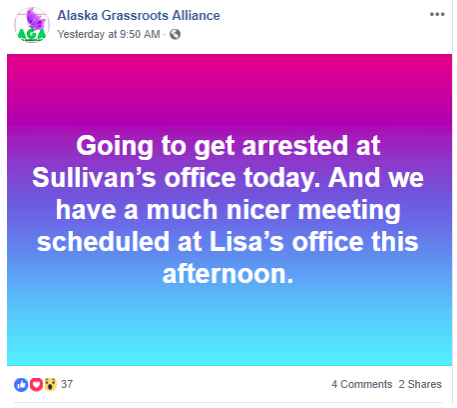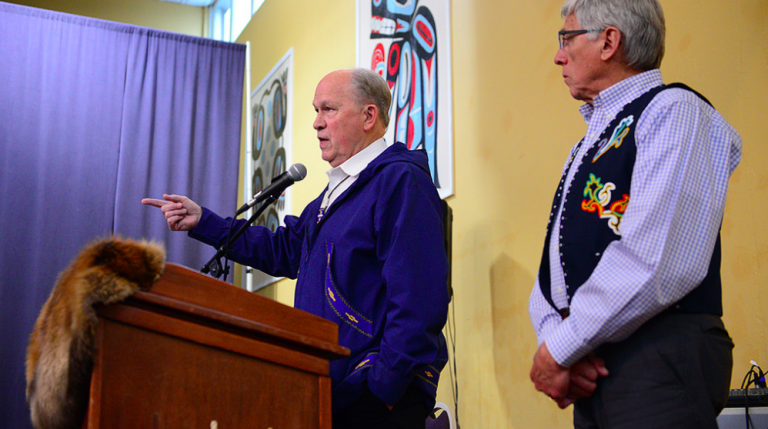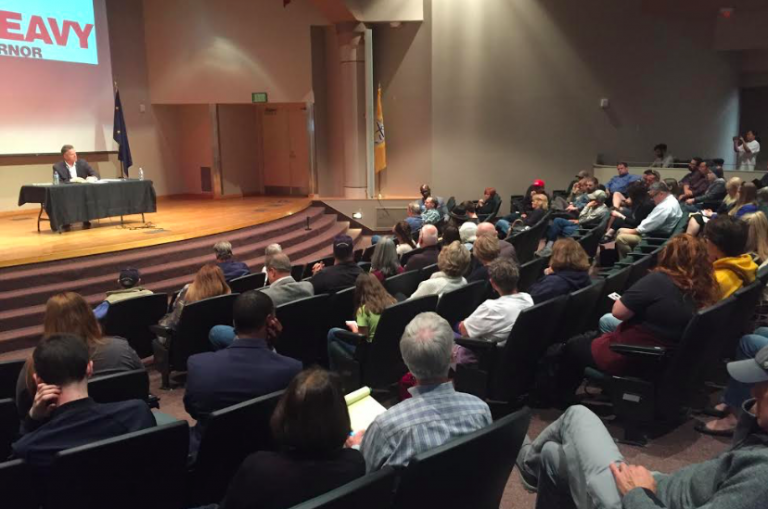Dear Editor,
Everyone including their mother, their grandmother and the Russian Bots (who influenced the election) have said everything that there is to say on the fake sexual abuse allegations against Kavanaugh already.
What hasn’t been talked about much is, how will the confirmation vote go?
Will Kavanaugh Be Confirmed?
Right now the three Republican Senators to watch are Susan Collins of Maine, Jeff Flake of Arizona and Lisa Murkowski of Alaska. I can’t comment on the other two, as I don’t know much about them. However, I do know quite a bit about Lisa “Murky Waters” Murkowski, who has quite a reputation in the state.
Background
“She is the daughter of former U.S. Senator and Governor of Alaska Frank Murkowski. Before her appointment to the Senate, she served in the Alaska House of Representatives and was eventually elected majority leader. Murkowski was appointed to the U.S. Senate by her father, Frank Murkowski, who resigned his seat in December 2002 to become the Governor of Alaska. She completed her father’s unexpired term, which ended in January 2005. She ran for and won a full term in 2004.” [Source: https://infogalactic.com/info/Lisa_Murkowski]
Alaskans have a paradox. We are the most conservative Socialists in the nation.
On one hand, we are fiercely independent, economically sustainable (more or less) and hate federal meddling; don’t ask an Alaskan for their opinion on “The Roadless Rule.”
On the other hand, we are a complete welfare state by the strictest definition. We are heavily dependent on military aid that help support Fairbanks and Anchorage. Southeast, Alaska is heavily dependent on the state capitol remaining in Juneau. Native Corporations are heavily dependent on the Oil and Gas Pipeline to keep their villages going. And we love our Permanent Fund Dividend—don’t ask an Alaskan for their opinion on Governor Walker cutting the PFD in half.
So, while Alaskans as a complete group (including the Natives) hate the D.C. entrenched establishment, we play soft-ball with our politicians when we recognize they are able to keep Alaska fat and flowing with federal fiduciary funds. This is one of the main reasons why Murkowski was able to win her improbable Congressional campaigns:
“She ran for a second term in 2010. She lost the Republican Party nomination to Tea Party candidate Joe Miller. She then ran as a write-in candidate and defeated both Miller and Democrat Scott McAdams in the general election,[1] making her the first senator to be elected by write-in vote since Strom Thurmond in 1954, and only the second in U.S. history.[2] Although Sen. Murkowski has won three full terms to the Senate, she has never won a majority of the vote, winning pluralities each time: 48.5% in 2004, 39.5% in 2010 and 44% in 2016.” [Source: https://infogalactic.com/info/Lisa_Murkowski]
Lisa was a brand of politician that we could trust. We knew her father and while he had his issues, he more or mostly-less kept Alaska going through difficult times and it wasn’t much of a stretch to put our trust in another Murkowski.
CUT TO 2018
The reason why the Brett Kavanaugh judicial confirmation is so controversial is because it will solidify a “Right-Wing” tilt in the Supreme Court. This is also why Democrats are throwing everything, including their fake sex abuse victims at the political wall and hoping it will stick.
Lisa Murkowski is now in a pickle because she has to balance two things:
- Satisfying the people who put her in office (the Native groups).
- Satisfying the rest of the state who are obsessed with pork-barrel spending.
In order to please the first group, she makes the second group mad and if she pleases the second group she may lose her next election due to the first group’s withdrawal of support.
She’s in a lose-lose situation. Right now she is a Republican caucused with the Republican majority in the Senate. Regardless of how the midterms go, the Senate will remain majority Republican. However, if she votes against Kavanaugh the Republicans will forever hold a grudge against her and will strip her of any committees and positions of influence.
If this happens, group two is going to be mad and group one will also be mad in the long term because all their pet projects won’t materialize.
HOW WILL LISA VOTE?
Yes. Lisa Murkowski is going to make a calculated decision and vote in favor. Yes, Native groups voted her into office and they will be furious, however, her office doesn’t expire for another 4 years until 2022–PLENTY OF TIME FOR NATIVES TO FORGET SHE VOTED FOR KAVANAUGH.
Plus, after the midterm elections she will be guaranteed influential positions in the Senate and will have the prime ability to keep flooding Alaska with money and keep everyone happy.
Then come 2022, she will tell the Native groups,
“I know you were upset but look at all the great programs and “XYZ” projects that I brought back to Alaska! I’m the Chair of _________, which is important for the state, and I had to vote for Kavanaugh because that was in the best interest for the State of Alaska.”
I don’t know about the thought process for the Sen. Sullivan, however, after understanding the history of Murkowski she will be a solid vote for Brett Kavanaugh.
~ Arthur Martin, Editor of powreport.com, Prince of Wales Island
Read more letters:
Letter from Delta Junction: Vote yes on Kavanaugh
Letter from Delta Junction: Vote yes on Kavanaugh





